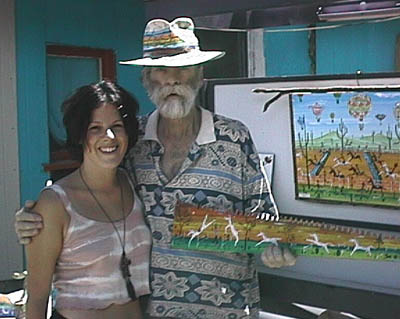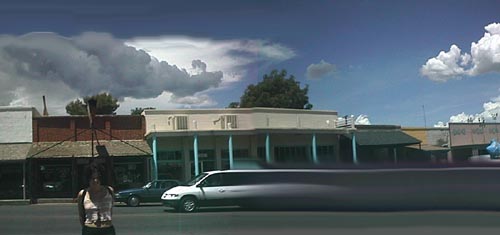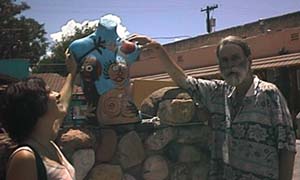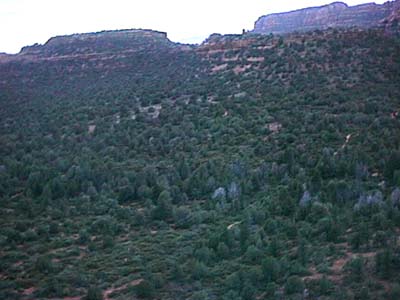
A cityscape by folk artist Sallielou.

Cats by Sallielou.

Sallielou telling his stories in his humble one room apartment.

Sallielou with Kim and a painted saw blade.

Kim on the street in Old Town Cottonwood

Sallielou with Kim and a painted mannequin.
Feel the energy around you.The spiral Andromeda Galaxy is sending forth the representative of its star fleet commander.
Feel the 'I am that I am' presence.
Project the power of unconditional love.

Winding 89A north of Sedona, looking south.
One of the rocky ridges near Sedona.
This wild arid valley below the sacred Medicine Wheel Plateau is owned by a corporation which intends to make it into a golf course.